Marketplace Gratification and Suburban Sprawl – Harold Grieves
In a recent group show, Clubmeet at HSP (High Street Project), Geoff Newman exhibited a small fake rock pool.1 Entitled Koolamata Waters, Blackwood Park Road it exuded the charm of the synthetic in a calm and benevolent manner. Its fake rocks looked benevolent, unimpeded by nostalgic cries of loss and yet it certainly didn’t compete against nature. It was simply there as though to suggest a new synthesis, a new modelling of the domestic idle. In its quiet serenity, completely complicit with its enhanced blue water, the pool signalled a new edge to our constant fencing, and domesticating impulse of suburban purity. Months later the same aspect re occurred in Jo Langford’s Companion Plants as part of her solo show Jitterbug at the Jonathan Smart gallery.2 Here, radio controlled fake roses were hemmed in by picket fenced race tracks in a neurotic ode to passivity and death. An unusual theme for Langford perhaps, but the work signalled a wider pre-occupation with suburban anxiety which has emerged over a range of artistic practices that has been earlier noted by Anthony Byrt and Kate Montgomery.3 However, what these particular works of Langford and Newman share is a foregrounding of the complicit ‘natureculture’ collusion that Donna Haraway foregrounds in the beginning of her Companion Species Manifesto.4 Claiming co-constitutive responsiveness is the foundation of evolution, Haraway sees in companion animal relationships a ‘symbiogenic’ potential for new ecological possibilities (32). At the centre of this relationship is her shift from an ironic, ‘surrogacy’ agreement with the trope of the cyborg to the complexly grounded inter-species relationship she shares with her kinship dogs (11). Calling it a ‘biosocial story,’ Haraway is able to show the way the kinship ties of companion animals allow us to ‘inherit in the flesh the turbulent history of modern capitalism’ (24). The complicity of this inheritance is what so easily registers within the natureculture collusions of companion animal pact-hoods, but I also want to stretch its flexibility to the synthetic manifestations of Newman and Langford. Surely if we can have a biosocial story that addresses the companion animal, then we can also experience the story of ecological manipulation in the artificial and the synthetic.
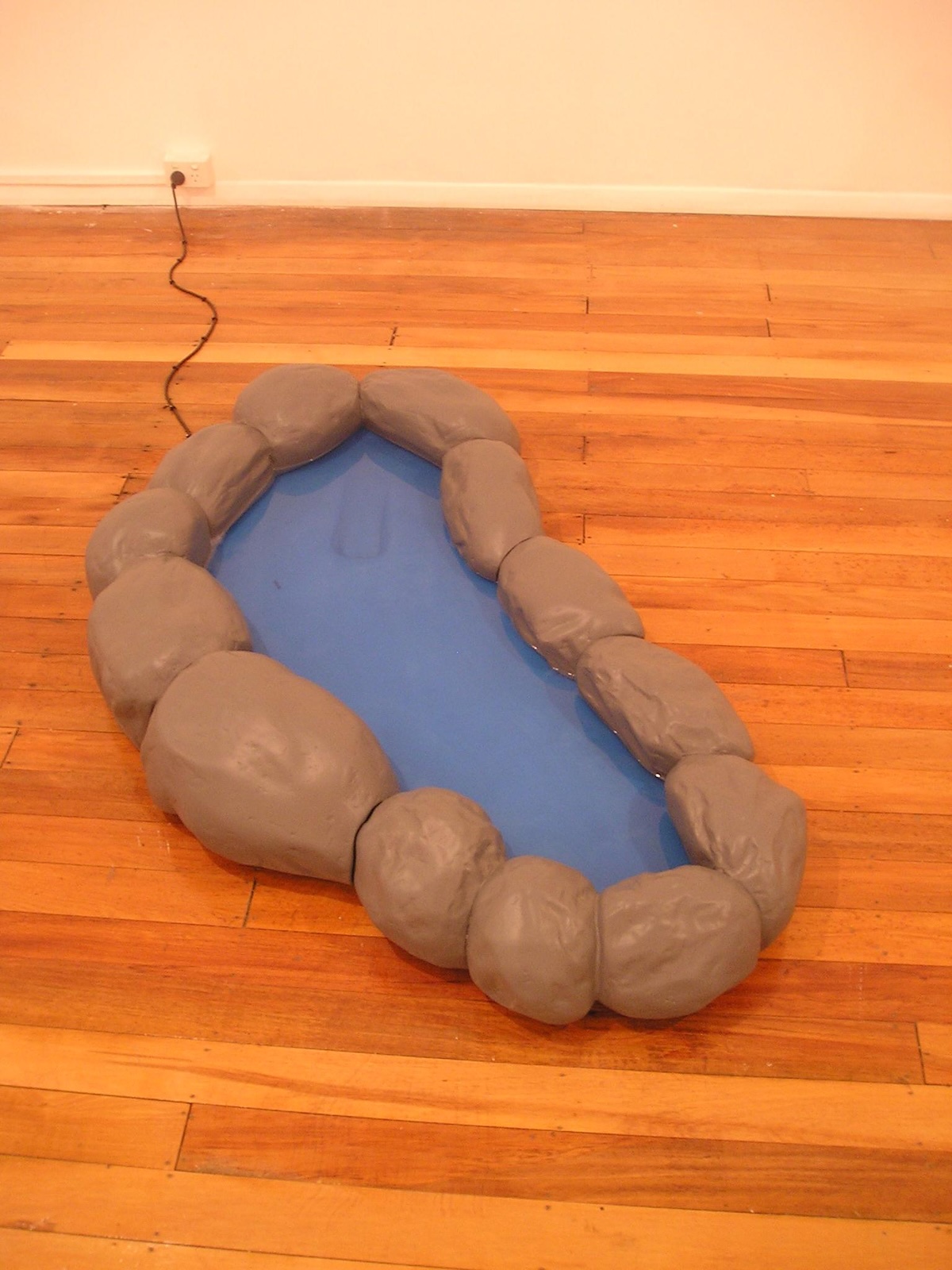
Geoff Newman, photograph courtesy HSP, Christchurch

Jo Langford, photograph courtesy Jonathan Smart Gallery, Christchurch

Jo Langford, photograph courtesy Jonathan Smart Gallery, Christchurch
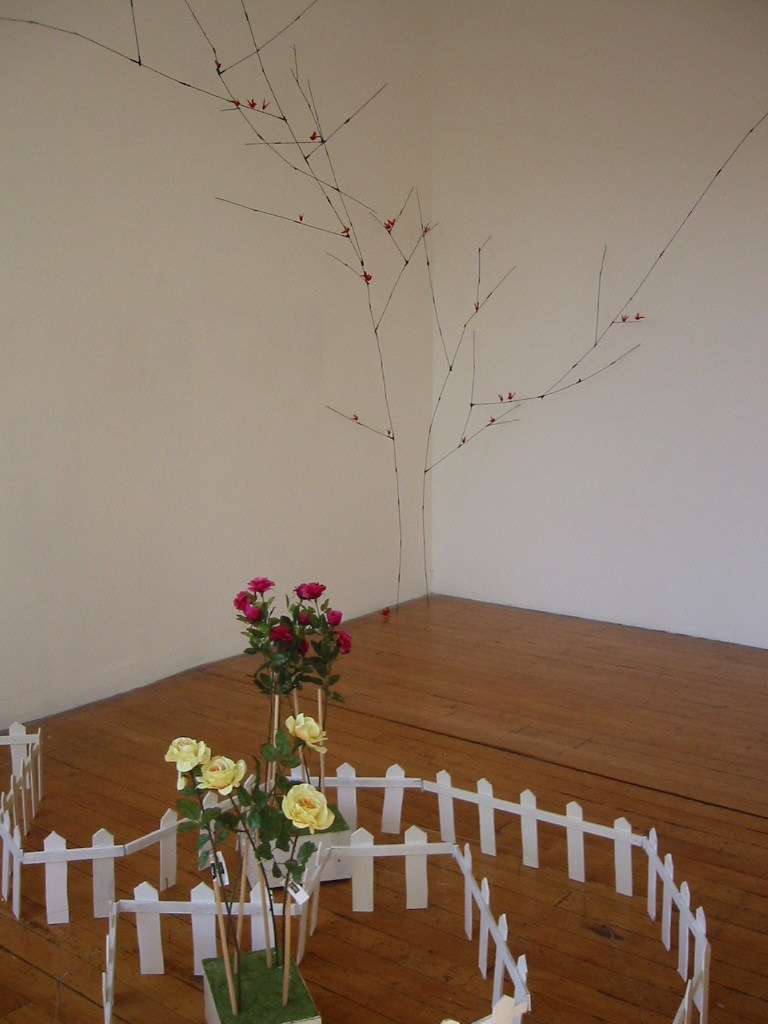
Jo Langford, photograph courtesy Jonathan Smart Gallery, Christchurch
The success of Newman’s Koolamata Waters lies in its charm. The pool is so blatantly fake that it lies there oblivious to our nostalgic need for a Nature surrogacy. Its emphatic objectness synthesises our commercial desire and restrains our curiosity by offering itself as a supplement to nature and not a surrogate replacement. It’s in this way that it answers to the synthetic arrangement that Rem Koolhaas identifies as a melding of ecology and economy.5 Noting that ecology exists as a marketing strategy which covers our nostalgia and guilt in a moment of instant access appeasement more akin to ‘thick pelts, or even toupees’ (187), Koolhaas sceptically dismisses a branded ‘Hyperecology™’ (186), a strand of synthetic experience which ‘has to exaggerate its claims to the authentic’, by rendering ‘the intended earnestness instantly allusive’ (189). In the marketplace of art, of artifice, understanding this new synthetic reign is the key to success. Newman’s pool works precisely because it takes on the synthetic realm and emphatically stands up as a supplement which reduces replication to mere pretence. This reduction runs rife with its mock sensibility of resurrection, forcing it to assume the laconic composure of failure. Whilst most artists simply modify or regurgitate in a constant process of perennial manipulation, Newman’s synthetic rendering begins to sound benign, almost Sisyphean, in its sympathetic, nostalgic fissure. This sympathy is the key to its production of scale and complicit arrangement with replication and supplementation. It’s the embodiment of such a conceit that allows Newman’s pool to encompass Koolhaas’s notion of Junkspace, that sprawling proliferation of modernity’s coagulation.6
If the Modern was centred by the arch, that unifying centre which allowed the reticent and monumental spaces of utopian fantasy, then Junkspace is centred by the escalating proliferation of the credit generation.7 Weight is no longer simply shared between unifying points, but spread endlessly, proliferating alongside lifestyles that seek to offload their own weight in an endless cycle of deferment. In this pursuit we inevitably beg ‘instant gratification’ banking up half-lifes of curtailment in our frenzied adoption or adaptation of ‘future perfection’ (179). With so much geared towards proliferation, Junkspace accumulates and swallows whole authenticity and originality in a preference for conversion or exchange. You can’t keep up with Junkspace because we’re enmeshed within it. Its flows lead to disaster in the sense that Junkspace is the remainder, its very premise is based on this expediency. So instead Junkspace urges propulsion, a systematic leisure zone of willing partners dancing within the cusp of delirium. As Koolhaas points out, ‘there is a special way of moving in Junkspace... it is an acquired culture’ (189).
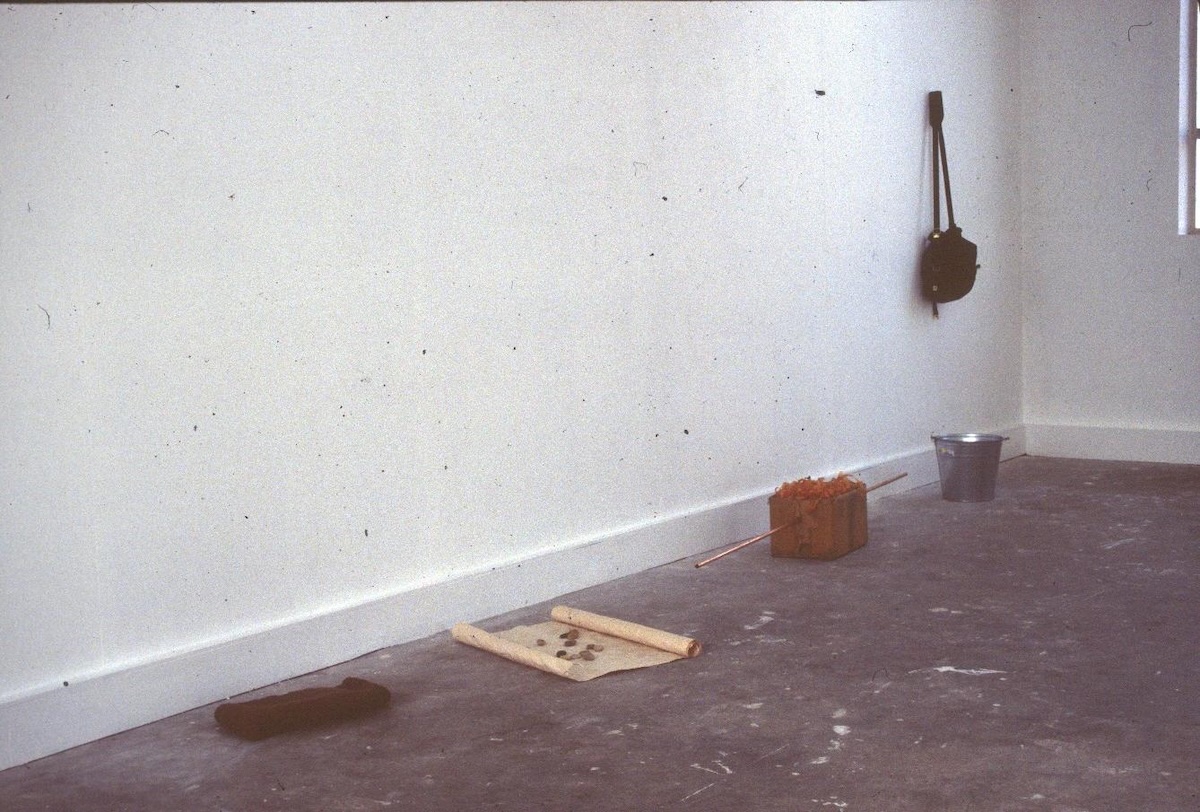
Nick Austin, photograph courtesy HSP, Christchurch
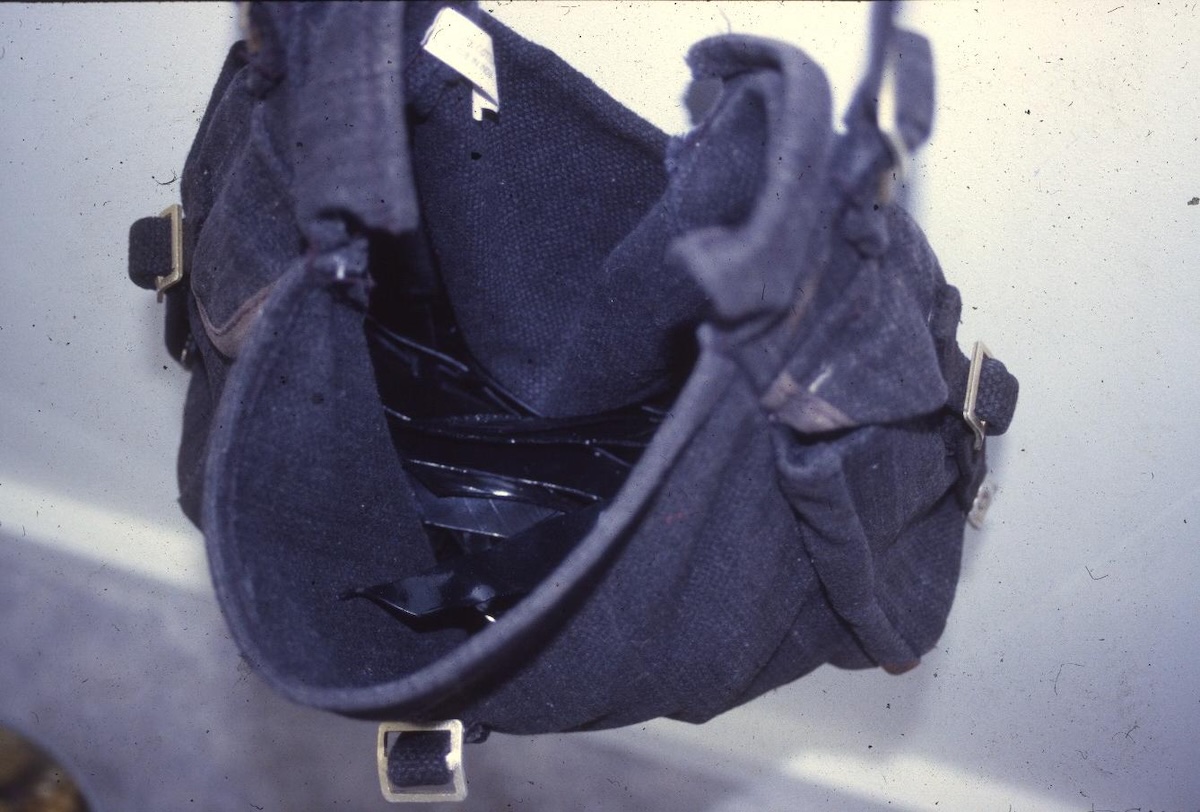
Nick Austin, photograph courtesy HSP, Christchurch
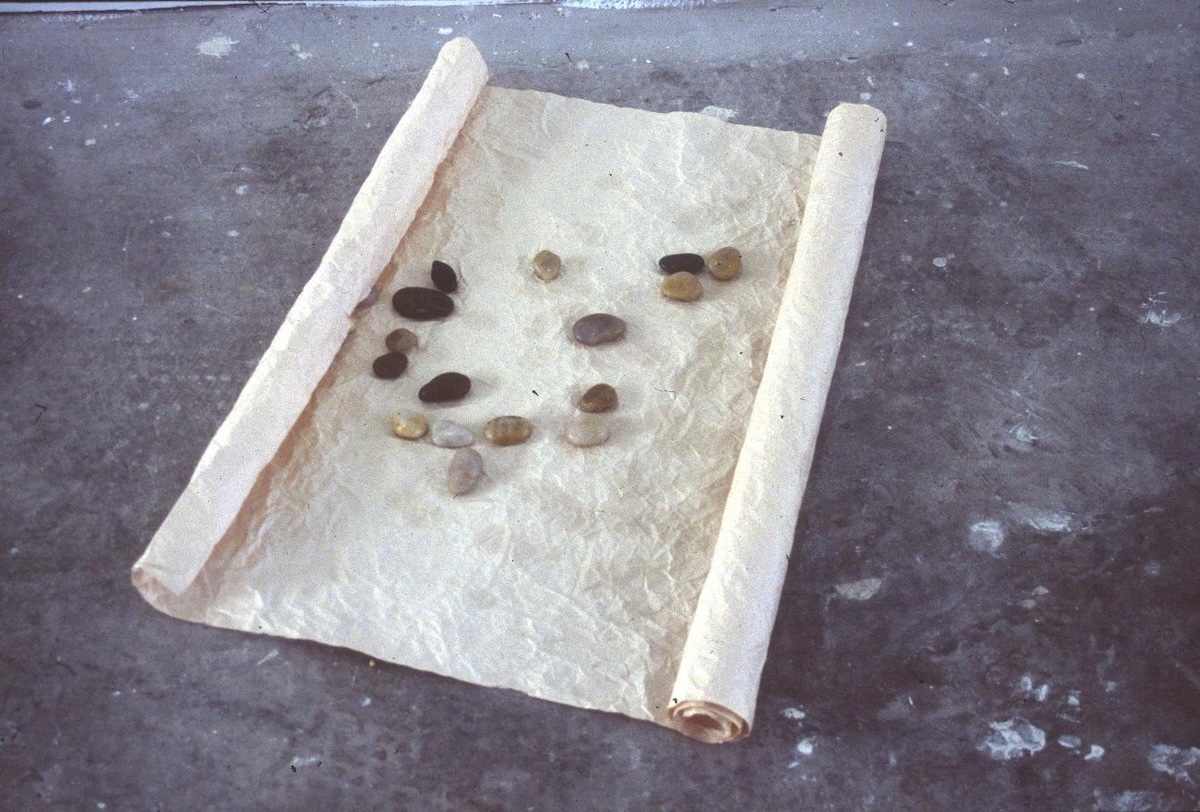
Nick Austin, photograph courtesy HSP, Christchurch
It’s hard to find a politicised ground on which to move within the benign terrain of Junkspace. The bleak desolation of Koolhaas’s weave is more informed by the constant deflation of what he calls, ‘canned euphoria’ (179) than a more straight forward pessimistic ode would allow. For instance, his most startling analogy is to liken Junkspace to a ‘perpetual Jacuzzi with millions of your best friends’ (176). The point here is the wallowing and the strangulation. Together they act out the revenge of expendability. Junkspace proffers, gratifyingly sating our every need but also extends as a vast ‘fuzzy empire of blur’ (176), leaving behind tracks of debris that need to be constantly accounted for, re-conditioned and sealed as the new synthetic commodity. If Junkspace dictates, then its ultimatum is a dichotomy between frenzied leisure and fanatical upkeep. As Koolhaas explains, the ‘structural shortfall’ of Junkspace, its ‘contingent bankruptcy’ forces ‘each square inch [to] become a grasping, needy surface dependent on covert or overt support, discount, compensation and fund-raising’ (184). So while Junkspace may be like being ‘marooned in a never-ending casual Friday’ (185) its impetuous is upkeep, a predicament which so easily slips into the stranglehold of pretence. Thus, the binding contract implicit to Junkspace is not just this insatiable appetite that proliferates expendability through ‘credit nirvana’ but also a legitimate discourse of loss which acts to cement nostalgia’s purpose (189). Unlike the re-engineered, or the re-discovered, loss operates to untangle this stranglehold of commercial necessity. In a ‘more and more, more is more’ (177) world, loss is intangible, loss is a vanishing discourse of words and memory that needs to be navigated rather than procured. In this sense, it is both proponent and cause of Junkspace’s busy scene and yet it is also its unravelling thread. From within this arbitrary scene, authorless and victim to mass appeal, loss alerts us to the stable, dependable market appeals of the ‘new’ authentic through its cyclic triggering of nostalgia.
Why else can we so easily identify so much retro, so much re-discovery, so much vintage. Flush with such appeasement to the real, Junkspace will continue to void its wings of debris, its vast columns of expended commodity until we refuse this emotive, market friendly surrogacy. The constant procession of this replication and pitch, in which market appeasement falls haplessly over its own defective narrative of loss is exactly why we have artists like Andrea Zittel urging us to ‘live below our means,’ or at the very least to think about how something can be designed to look better with age.8 Which is exactly what seems implicit to Koolhaas’s Junkspace manifesto. It stands out, not as the desperate ode of consumptive oblivion, but as the watchdog of passivity. It’s in this sense that Junkspace becomes political, for the continual proliferation of Junkspace depends so much ‘on the central removal of the critical faculty in the name of comfort and pleasure’ (183).
Within this scape of leisure, nostalgia and loss, the sculptural practice of Auckland artist, Nick Austin, stands out. Constantly his work seeks to pursue the narrative lines and complicit collusion of commercial expediency and cultural leisure. Often his work will overtly reference the expediency of consumer culture not to simply satirise it, but to push it against its own self-conscious deceits. For instance, he makes a rustic yellow paper by using a beauty salon’s tanning beds to colour and stain an ordinary piece of white stationery. Ostentatious display is the key to this deployment of the cosmetic narratives of improvement and desirability. The application of the artificial sun tanning process smacks of a perverted photosynthesis, akin more say to the labour of a mortician than a beautician, and yet it also cuts quickly into the cosmetic layers of an industry whose basic commodity is arbitrarily enforced and perennially procured. It’s in this way that Austin’s use of the sun-tan bed highlights the procedures of commercial desire. In this sense, Austin’s drooping, laconic paper, so carefully aged and wilting at the seams, calls into question not the tanning process, but the manipulating cycles of a cosmetic industry which continues to sell the latest look no matter how tired that procedure becomes. Similarly he uses hippy pebbles, those small shiny rocks one finds at new-age mystic stores, to play a sort of oracular game upon such paper. At this edge, Austin’s manipulation of such narratives, imbibe the fashionable taste of market desire for his own ends. It’s as though to suggest that cosmetic outcomes are at a loss to explain their narrative origins and cloak themselves in a mystification more centred by chance and configuration than any authenticating principle. This same chance-necessity, what you could call the propulsion of the arbitrary9 is seen more simply in Austin’s coin jars, which immerse collected silver coins in water in an obsolete instant coffee jar. Here two competing narratives of accumulation and instant access abut cancelling each other out to produce that perennial stasis so familiar to Junkspace’s terrain. It’s this stasis that informs so much of Austin’s work and it’s perhaps most obviously seen in his bag full of broken records. A simple satchel, filled with black, broken, 12 inch records is hung from a peg as a poetic sentiment that sings an ode to passivity as much as it does to the cyclic nature of trends and market hysteria. This sense of awareness informs Austin’s work to the point of bleak saturation and yet there is something residual in his manipulation and conscription of everyday objects that turns them into pertinent cultural memories of lament and nostalgia. It’s this strain of sympathy, both a dialogue of loss and manipulation that exudes a certain wry sense of humour. It’s as though he’s faced down Junkspace’s tenacious hold and yet still remains resiliently alert. It’s in this that I want to make a plea on the part of Austin’s work for a uniquely conspiratorial resistance to the contemporary market hype of expedient consumer culture. (I think there’s a way out of here and it’s not just going to be a simple case of closing our eyes).10
In 2001 Peter Fischli and David Weiss exhibited Büsi (Kitty), a real-time electronic image of a domestic house cat on the video screens of Times Square, New York. The appearance of the domestic animal within the corporate space of this prime real estate of advertising, strikes an anomalous note which seeks to foreground the vividly real, corporeal conscription of the domestic animal. To often prey to narcissistic pleasure, the domestic animal, especially the cat with its relative hermetic solace, (as compared to the gregariously social domestic dog), acts as a unifying principle within the corporate compound of the familial unit which so easily cements the Anglo-hegemonic Western culture mould. The point here seems to be that Büsi (Kitty) disrupts this model by re-introducing the disenfranchised representation of the domestic animal within this mediascape. This displacement of the real-time image in Büsi (Kitty), argues for a reembodiment of this particularised lived history. To return to Haraway’s earlier comments, Büsi (Kitty), acts to remind us just how easily, ‘we live out in the flesh,’ the corporate realm of contemporary consumer culture. However to shift from the domestic history, and bi-social story of the cat to the synthetic realm of Junkspace’s terrain we need to co-mingle these narratives in the same way Langford has in her Companion Planting works.
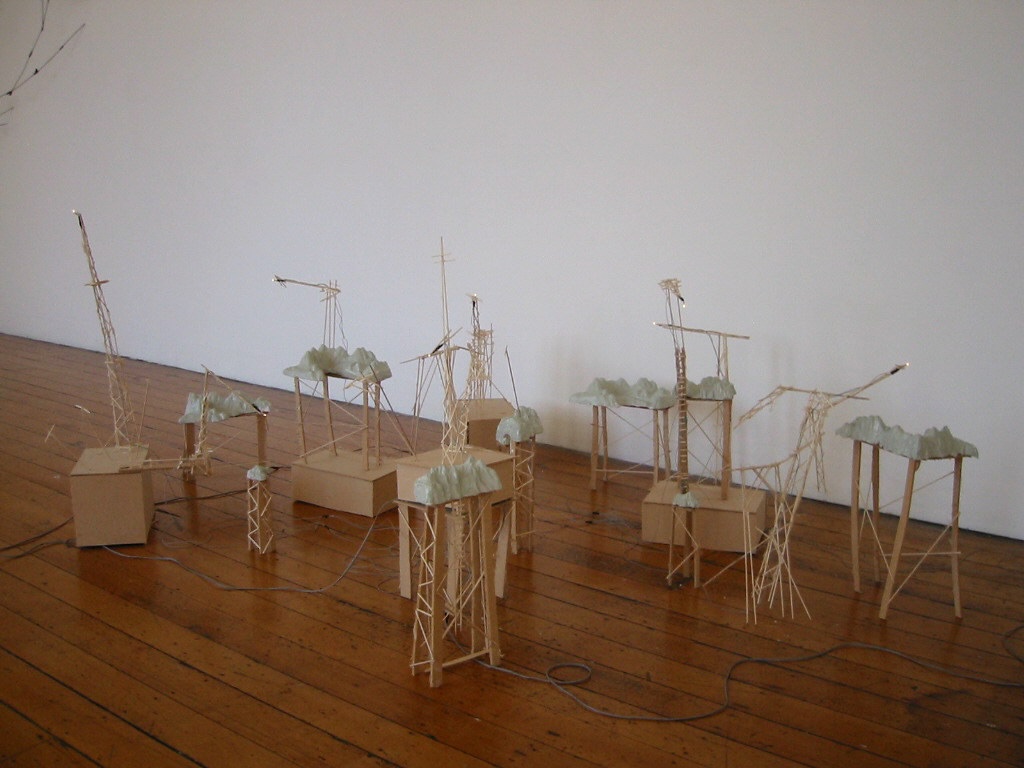
Jo Langford, photograph courtesy Jonathan Smart gallery

Jo Langford, photograph courtesy Jonathan Smart gallery
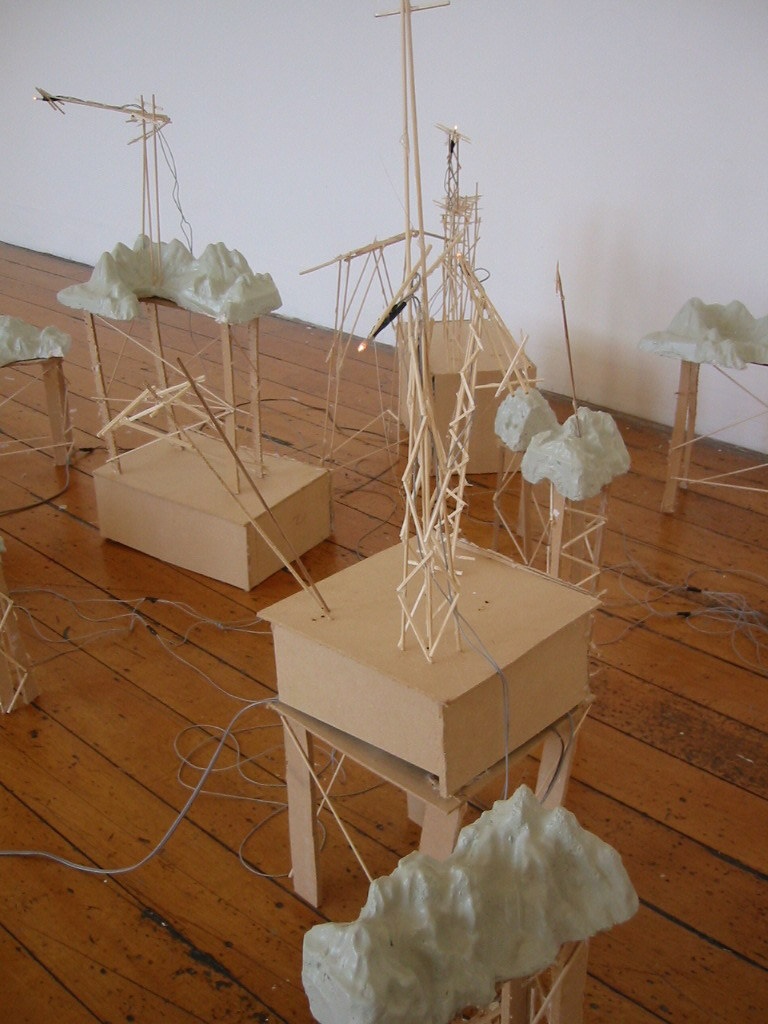
Jo Langford, photograph courtesy Jonathan Smart gallery
The neurotic guise of Langford’s frustratingly tight race courses and the picket fence enclosures mimic the overt fears of the closed circuit lifestyles of gated communities and suburban sprawl. Contained within this very real, sceptical derision is a veil of cognoscenti elevation and blind-eyed idealism. As Sally McIntyre has pointed out, the continual scepticism towards places like ‘Christchurch’s Northwood embody a paranoid ideology’ that could just be a ‘wilful headin- the sand attitude’ towards a ‘well-entrenched home grown ethic of suburban privacy.’11 As a consequence she suggests that ‘Northwood might function in this way to deflect Christchurch’s awareness of its own most undeniable qualities, as Disneyland does to Baudrillard’s America’. It’s this very question which the domestic animal can best identify. Just as Koolhaas has suggested that Junkspace ‘depends on the removal of the critical faculty’, the pet in its perpetual silence against the narcissistic pleasure of the suburban idle offers a subjectivity through which to unveil this critical void. What Langford’s work shows though is the double edged blade such strategies carry within them. Erica Fudge has shown how we need to pay attention to the use value of animals and she is quick to point out that the latest hustle around domestic animal studies could easily be the latest version of a long running story of exploitation and projection.12 Certainly as the new niche of academic activity flourishes around this subjective otherness, it’s easy to see just how easily we could fall prey to a conceptual projection in the further guise of (anti)humanism. It’s this liner threat that allows Langford to co-mingle the companion animal within the synthetic realm of Junkspace’s expedient market culture. To return to Haraway’s natureculture present, Langford’s synthetic articulates a very deliberate play on companion species, announcing a warning against such overtly humanistic presence(s). That said, there is still a coyness, a glad techno-animalism which brings together the bonding threads of this domestic idle and an ongoing re-evaluation of interspecies subjectivity. The suburban sprawl happening before our very eyes is, undoubtedly, the central manifestation of Junkspace in this country, especially as it claims in vast chunks of a retreating Nature into its vacuous, all-encompassing grasp. What our scepticism misses though is that it too restructures a synthetic natureculture which needs to be better understood. The levels of nostalgia and hyper-surrogacy that such synthesis entails are already cultural levers we think we understand all too well. What the domestic animal bond shows us though is just how easily we’ve missed even the most obvious and telling trails that we should have been following all along.
If Junkspace teaches us anything then it is surely the lesson of erasure. The trick, though, is not to follow its paths, but to register the way these ecologies are so rapidly changing and adapt to them. Following Fudge’s lead I want to find ways in which we can write and think the ‘human’ as an ‘embedded’ agent ‘reliant upon the natural order’ (15) even within this synthetic realm. Thinking that we can restructure our developmental agency, even just minutely, without attending to the interspecies relationships that exist within the urban ecologies that co-exist alongside, even pre-empt suburban sprawl is a fallacy best confronted through the domestic realm whose very fantasy has so excessively propelled this hyper-development. With this in mind, it’s easy to see the bleak humour in Langford’s fake, transportable plants. I mean they, more than anything, signal a dismal future in which we’re forced to play out our companion relationships with a dependent technoculture whose supposed autonomy comes nowhere near even the most limited co-constituency of the domestic animal bond. Even worse, these ‘new’ companions will, inevitably be forced to run on energy reserves that are already easily past their half-way marks, and there’s nothing worse than playing with a wilting dependency, something Langford’s power-drained, unresponsive carts so avidly displayed.
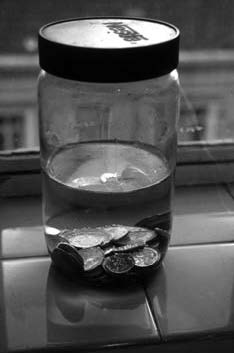
Nick Austin, photograph courtesy HSP, Christchurch
Footnotes
Clubmeet a group of show of recent Wellington graduates. It also featured the work of Gary Birdle, Kim Paton and Sandy Gibbs. It ran from the 29th June till the 16th July, 2005 at HSP, Christchurch ↵
Jitterbug was shown from the 18th October till the 12th November, 2005 at the Jonathan Smart Gallery, Christchurch ↵
Byrt writes about ‘suburban anxiety’ in reference to Yvonne Todd’s work in his essay ‘Vacant Lot’, Landfall 206, Spring 2003, (108–117). Kate Montgomery traces out the suburban scepticism of Ri Williamson’s work in her catalogue essay, ‘Prismatic Reflections on the Suburban Sprawl: Recent Work by Ri Williamson’ in Showstoppers, Jonathan Smart and Tessa Giblin, 2004, (24 –29). More thoroughly though and over a wider range of practices, namely, Eddie Clemens, Sam Eng, and Williamson again, she continues to explores these issues in the HSP serial, Suburban Neurosis ↵
Donna Haraway, The Companion Species Manifesto: Dogs, People, and Significant Otherness, Chicago: Prickly Paradigm Press, 2003 ↵
Rem Koolhaas, ‘Junkspace’, October 100, Spring 2002, (175–190; 187) ↵
Koolhaas writes of Junkspace as the ‘product of modernization,’ it is ‘what remains after modernisation has run its course, or, more precisely, what coagulates while modernization is in progress’ (175) ↵
Koolhaas writes of the arch as the obsolete ‘workhorse of structures’ that has now become the ‘depleted emblem of ‘community’’. To make matters worse, he suggests in its absence, ‘it is simply applied—mostly in stucco—as ornamental afterthought on hurriedly erected superblocks’ (176) ↵
For an introduction to the work of Andrea Zittel see James Trainor, ‘Don’t Fence Me In’, Frieze 90, April 2005, (88–93) ↵
Koolhaas opens his Junkspace essay with a warning about contemporary culture’s beguilement before the arbitrary; ‘because we abhor the utilitarian, we have condemned ourselves to a lifelong immersion in the arbitrary’ (175) ↵
Koolhaas’s warning to architects, ‘you thought you could ignore Junkspace, visit it surreptitiously, treat it with condescending contempt or enjoy it vicariously’ (182), could as equally apply to the passive apathy of contemporary culture, especially given our penchant for irony and kitsch vices ↵
Sally McIntyre ‘Dreaming of a hand-painted Paradise—views of the flat city,’ http://www.physicsroom.org.nz/archived/gridlocked/writing.htm Gridlocked ↵
Erica Fudge ‘A Left-Handed Blow,’ Representing Animals, ed. Nigel Rothfels, Bloomington, Indian University Press, 2002, (3–18) ↵